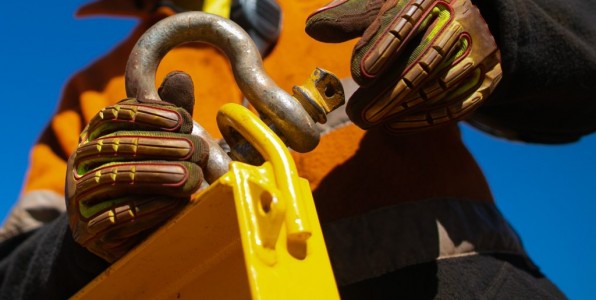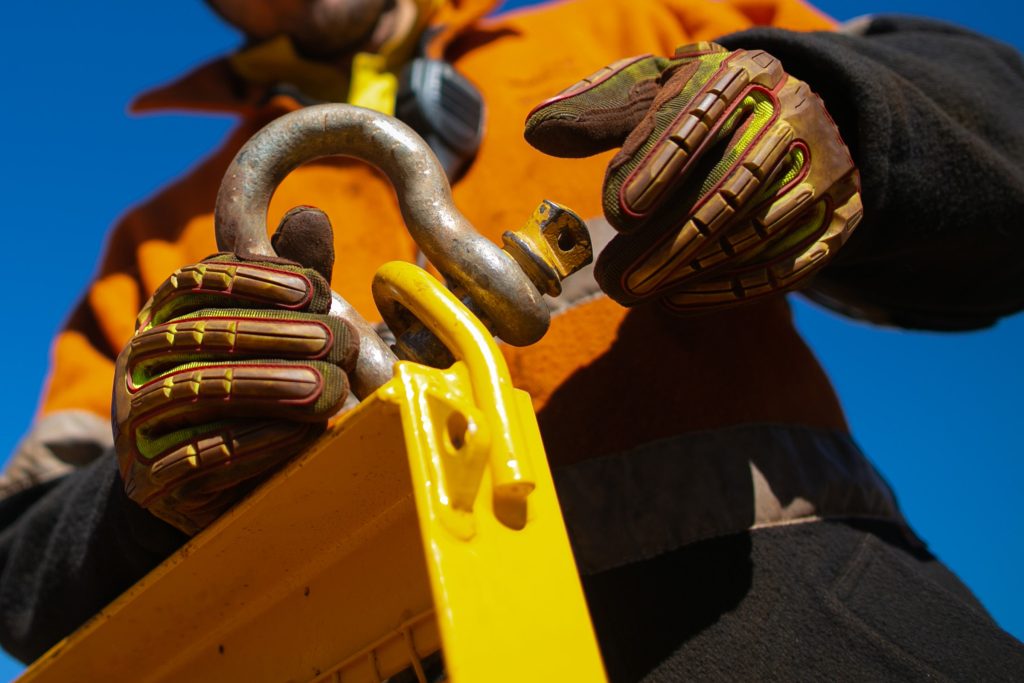How To Handle Shackles Properly During A Construction Project

How To Handle Shackles Properly During A Construction Project
Shackles are a type of hardware used in construction and other industries to connect or secure objects together. They consist of a U-shaped body with a bolt or pin running through the opening, and they are often used to attach cables, chains, or ropes to various types of equipment.
Handling shackles is essential in construction projects to ensure safety and prevent accidents and injuries. Shackles that are not handled correctly can fail, causing objects to fall or shift unexpectedly, resulting in serious injuries or even death. Thus, proper handling techniques and safety precautions are necessary when using shackles on a construction site.
It’s also worth noting that other types of hardware are used for similar purposes, such as clevises. Read here for more information on the difference between shackles and clevises and how to choose the proper hardware for your project.
Additionally, this article outlines the appropriate ways to handle shackles during a construction project. Keep reading to learn more.
Safety Precautions
Here are some essential safety precautions to consider when handling shackles to ensure the safety of all workers on a construction site:
- Wear personal protective equipment (PPE): It’s vital to wear the appropriate PPE to protect yourself from potential injuries. It may include gloves, hard hats, safety glasses, and other protective gear as needed.
- Inspect shackles for damage before use: Before using a shackle, it’s necessary to carefully inspect it for any signs of wear, such as bending, corrosion, or other deformities. If a shackle is damaged, it should not be used and instead replaced with a new one.
- Use the correct size and type of shackle for the job: Using the wrong size or type for a particular task can lead to accidents and injuries. It’s crucial to use shackles designed for the load and conditions encountered during the job.
- Use shackles with approved certifications: It’s recommended to use shackles approved by organizations such as the American Society for Testing and Materials (ASTM) or the European Committee for Standardization (CEN). Using ones with these certifications can provide additional assurance of their safety and reliability.
Handling Techniques
Proper handling techniques are critical to safely using shackles on a construction site. Here are some essential methods to follow:
- Lift shackles using proper lifting techniques: It’s crucial to use proper lifting techniques to avoid injury. It may include bending at the knees, keeping the back straight, and using the leg muscles to lift. Keeping the shackle close to the body is also essential to maintain balance and control.
- Secure shackles properly to prevent slipping or shifting: Properly securing them is critical to prevent them from slipping or shifting, which can cause accidents and injuries. It may involve using a secondary support form, such as a cable or chain, to keep the shackle in place.
- Stay within the working load limit of the shackle: Each shackle has a specific working load limit, which indicates the maximum weight the shackle can safely support. It’s crucial to stay within this limit to avoid causing the shackle to fail.
- Avoid excessive swinging or jerking of the shackle: Excessive swinging or jerking can cause it to become unstable and potentially fail. It’s crucial to handle shackles with care and avoid sudden movements that may cause them to become unbalanced.
- Use proper tightening techniques: It’s worth keeping in mind to tighten shackles properly to ensure they’re secure and don’t slip or shift during use. This step may involve using a torque wrench or other specialized tool to apply the correct torque to the bolt or pin.

Storage And Maintenance
Here are some critical considerations for storing and maintaining shackles to ensure their continued safe use on a construction site:
- Store shackles in a designated area away from heavy machinery: It’s necessary to store them in a designated area away from heavy machinery and other potential sources of damage. Doing so will help protect the shackles from accidental damage and ensure they’re ready for use when needed.
- Keep shackles clean and free of debris: Shackles that are dirty or covered in debris can be more challenging to use and may be more prone to damage. Keeping shackles clean and debris-free is vital to ensure their safe and effective use.
- Use rust inhibitors as needed: In areas with high humidity or other conditions that can lead to corrosion, it may be necessary to use them to protect the shackles. These products can help prevent rust and extend the life of the hardware.
- Regularly inspect shackles for damage and repair or replace them as needed: Regular inspections are essential to ensure their continued safety. Any damaged shackles should be repaired or replaced to prevent accidents and injuries.
Conclusion
Proper handling techniques and safety precautions can help ensure the safe and effective use of shackles on your construction project. You can prioritize the safety of all workers on a construction site by following the steps given above.
Comments are closed